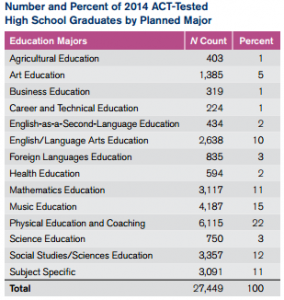Note: This is part of Advance CTE’s blog series, “Getting to Know…” We are using this series to help our readers learn more about specific states, State CTE Directors, partners and more.
State Name: Oklahoma
State CTE Director: Dr. Marcie Mack, state director, Oklahoma Department of Career and Technology Education
About Oklahoma: Oklahoma is home to the Oklahoma CareerTech System and the Oklahoma Department of Career and Technology Education, the state agency that oversees Career Technical Education (CTE) in Oklahoma. The system includes 29 technology center districts — each serving students at both the secondary and postsecondary level — and 395 comprehensive school district with CTE programs; 15 locations for 42 Skills Centers programs for offenders; and business and industry services to more than 7,000 companies annually. The system serves students through more than 500,000 enrollments annually. The Oklahoma Department of Career and Technology Education is governed by a nine-member, governor-appointed Board of Career and Technology Education. The board operates separately from the Oklahoma State Department of Education and the Oklahoma State Regents for Higher Education, enabling the state to collaborate more intentionally across various agencies.
 There is growing enthusiasm for CareerTech in Oklahoma, spurred in part by Gov. Mary Fallin’s Oklahoma Works Initiative — a cross-sector effort to strengthen the state workforce and close the skills gap — and the goal to increase postsecondary education and training attainment to 70 percent of individuals between the ages of 25 and 64 by the year 2025. With such enthusiasm on postsecondary attainment, Oklahoma is optimistic the current 50 percent of students in grades nine through 12 who enroll in CareerTech courses each year will increase as the state works to meet the educational attainment goal.
There is growing enthusiasm for CareerTech in Oklahoma, spurred in part by Gov. Mary Fallin’s Oklahoma Works Initiative — a cross-sector effort to strengthen the state workforce and close the skills gap — and the goal to increase postsecondary education and training attainment to 70 percent of individuals between the ages of 25 and 64 by the year 2025. With such enthusiasm on postsecondary attainment, Oklahoma is optimistic the current 50 percent of students in grades nine through 12 who enroll in CareerTech courses each year will increase as the state works to meet the educational attainment goal.
Programs of Study: Oklahoma’s programs of study are organized into 15 Career Clusters® that are aligned to the national Career Clusters framework. The board of CTE uses Perkins funds to develop statewide frameworks for many programs of study that local administrators can download and customize to fit the needs of their communities. To support local delivery and ensure that students receive appropriate and timely guidance, in 2015 Oklahoma launched a web-based career guidance platform called OK Career Guide. It provides data and resources to educators, parents and students to facilitate career exploration and enable students to identify and pursue high-quality learning experiences tied to their career interests.
Cross-Sector Partnerships: As an independent body, the Oklahoma Board of CTE has been able to work collaboratively across various agencies and sectors. One such collaboration is with the Department of Corrections. For years, Oklahoma has provided CareerTech opportunities to incarcerated youth and adults through a correctional education system. Approximately 1,600 individuals are served each year through these programs, with a job placement rate of more than 80 percent.
Oklahoma CareerTech also works directly with counterparts in secondary and postsecondary education. Working closely with the State Department of Education, CareerTech ensures high-quality instruction and curriculum throughout CTE programs in sixth through 12th grades. Core to this partnership is the Oklahoma state superintendent’s position as the chairman of the CareerTech board, which helps to facilitate collaboration on efforts such as teacher certification, academic credit and academy approval. At the postsecondary level, the board works with the Oklahoma State Regents for Higher Education to maintain credit articulation agreements for prior learning assessments, helping to streamline the pathways from secondary to postsecondary education.
Additionally, Oklahoma has strong partnerships with business and industry leaders through technology center business and industry services which provided services to more than 7,000 companies last year. Examples of some of the services include safety training, customized training, Oklahoma Bid Assistance Network, and adult career development to name a few. The statewide Key Economic Networks (KEN) established with Oklahoma Works include representation from regional stakeholders who collaborate to develop, strengthen and expand career pathways. Through regional KENs, Oklahoma has been able to leverage employer insights, reflect on labor market information and encourage strong partnerships at the local level.
On the Horizon: In January 2017, JPMorgan Chase & Co. announced that Oklahoma would be part of a cohort of states focusing on transforming career readiness systems under the New Skills for Youth Initiative. Oklahoma, along with nine other states, will receive $2 million over the next three years to embark on an ambitious statewide effort to improve access to high-quality CTE programs.
Separately, the Oklahoma State Board of Education approved a new accountability framework late in 2016 that aims to count postsecondary opportunities as viable options for the framework, including participation in internships, apprenticeships, industry certifications and dual (concurrent) enrollment. Previously, these indicators were awarded as bonus points only.
Austin Estes, Policy Associate





